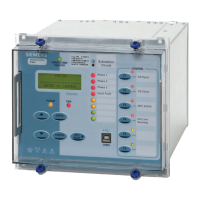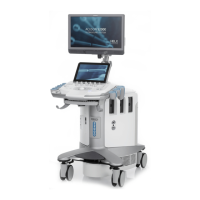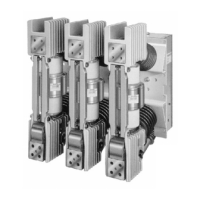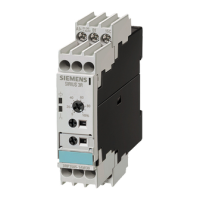7SR210 & 7SR220 Description of Operation
Unrestricted Page 92 of 94 ©2018 Siemens Protection Devices Limited
6.3.8 Fault Locator
The relay provides a single-end type fault locator which is able to estimate the fault position using
analogue information measured by the relay at one end of the protected circuit during the short
duration of the fault.
Following relay operation due to a system fault, the fault waveform record is automatically evaluated to
establish the fault type in terms of the phase(s) affected and the relevant current and voltage is used
to calculate the fault impedance. The relay compares this information to a line model based on
characteristic impedance parameters which are input to the relay as settings and provides an output
estimate of the fault location. This data is presented as a percentage of line length or a distance in
miles or kilometres.
The Positive Sequence Impedance on the protected line must be provided to the relay as settings for
impedance magnitude and characteristic phase angle to enable the distance to fault to be calculated.
The Earth Fault return impedance is specified in terms of the ratio of zero to positive sequence
impedance magnitudes and the characteristic phase angle of the zero sequence impedance. The
characteristic angle of the zero sequence impedance is often significantly different to that of the
positive sequence impedance.
When power systems are earthed through compensation (Peterson) coils, the earth fault currents are
extremely low and are not proportional to fault location. Impedance based fault location cannot be
used for earth faults. Phase-to-phase fault location can be estimated. On networks of this type it is
possible to have two earth-faults on the network simultaneously on different phases of the same circuit
which will appear as a phase-to-phase fault. This is known as a Cross-Country fault. In these cases
the measured impedance cannot give an accurate estimate of the fault condition. The 7SR22 relay
provides detection of this condition using the measured zero sequence voltage to positive sequence
voltage ratio (U0/U1) to allow the possible cross-country fault to be reported. This threshold is
adjustable by a user setting.
Fault Location is reported for faults calculated in a zone which extends to 200 % of the forward line
impedance and 10 % in the reverse direction. High resistance fault results where fault resistance is
calculated as up to 20 times the line impedance are reported. For faults beyond these limits, the
message ‘No Location’ is reported.
The Fault Location estimation is initiated by operation of the Trip Output. Some protection elements
may be set to provide tripping for system conditions where a fault location is not applicable. The
initiation of the Fault Locator can be inhibited by user settings.
The settings for the Fault Locator are found as a sub-menu in the Data Storage menu.
The Fault Locator result data is available in the Fault Data records and can be viewed at the relay
fascia and downloaded from the relay.
6.4 Metering
The metering feature provides real-time data available from the relay fascia in the ‘Instruments Mode’ or via the
data communications interface.
The Primary values are calculated using the CT and VT ratios set in the CT/VT Config menu.
The text displayed in the relays ‘Instruments Mode’ associated with each value can be changed from the default
text using the Reydisp software tool.
The user can add the meters that are most commonly viewed to a ‘Favourites’ window by pressing the ‘ENTER’
key when viewing a meter. The relay will scroll through these meters at an interval set in the System
Config/Favourite Meters Timer menu.

